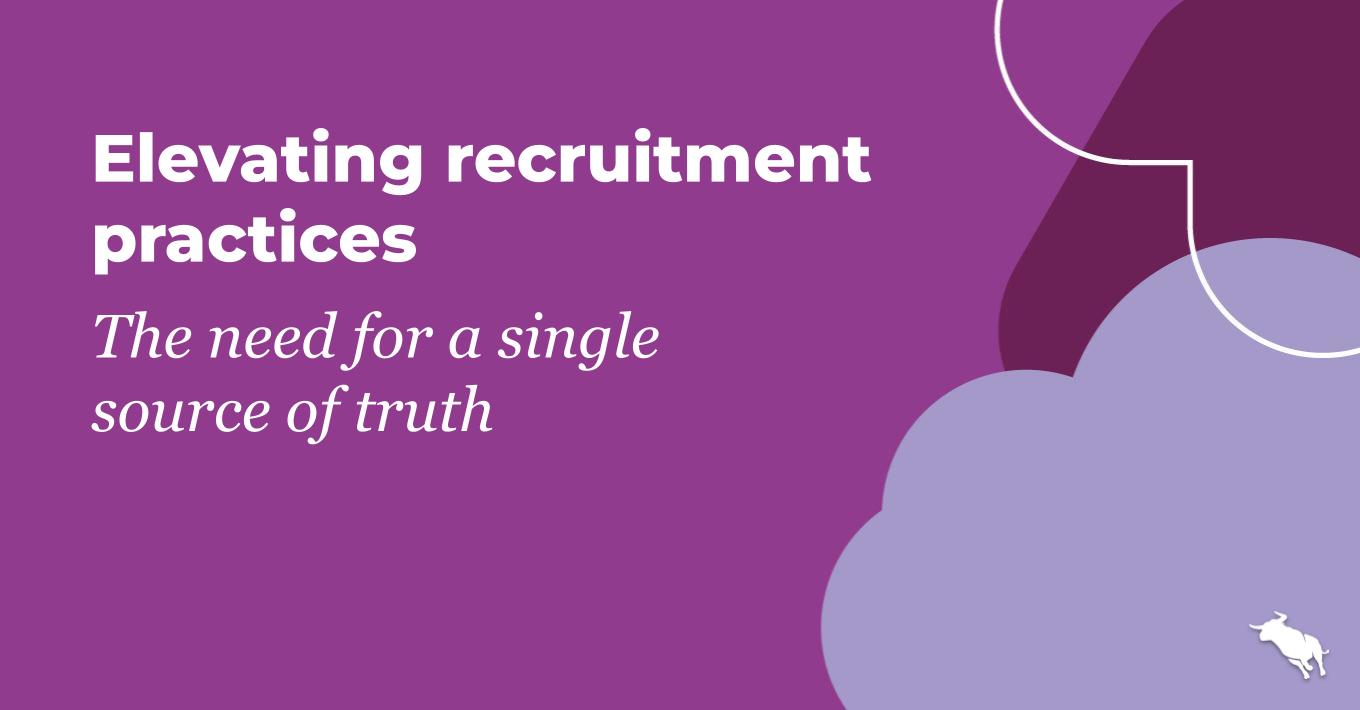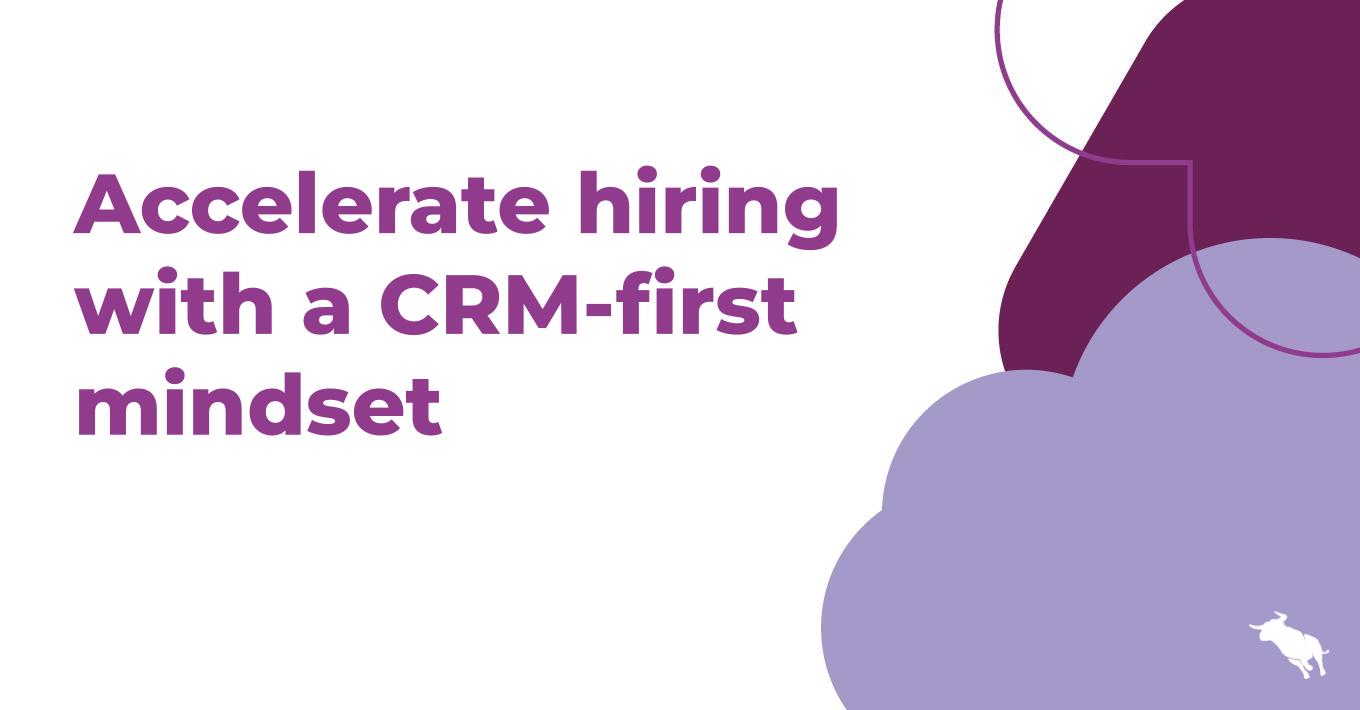How to Mix Technology and Good Habits to Make Your Team More Productive

If you want to build a more productive recruiting team, it’s essential to leverage the right technology. But, without the proper foundation, technology can only take you so far. How can you use technology to make your team more productive? And what are the common missteps staffing firms make when trying to incorporate technology? To find out, Bullhorn’s Nina Eigerman spoke to Joanne Ung, Managing Partner at Convectus Solutions.
Nina Eigerman [NE]: Can you share a bit about your background and how you come to know so much about recruiting?
Joanne Ung [JU]: My team and I at Convectus Solutions provide technology (CRM, ATS, HRIS, etc.) consulting and implementation services to the staffing industry and corporate recruiting for over a decade—and for a few us, a couple of decades. But importantly, we also have actual experience being on the other side of the table performing recruiting functions. And we continue to live and breathe with the staffing and recruiting community through our involvement with associations and partners, such as Bullhorn.
NE: There’s a lot of talk about automation and artificial intelligence in the recruitment industry. For 20 years people have been saying that technology will replace the recruiter… yet recruiters are still here. What are some of the unique things that recruiters do that can’t be done by technology?
One of the most important aspects that recruiters provide is the “human touch” to the recruiting process. At the end of the day, candidates are going to go work with people. Even though technology can help make assessments of certain aspects of a candidate, facilitate an efficient process, and regularly send out marketing materials, the recruiter’s interactions with the candidate provide insight into other tangible characteristics—qualities such as culture fit, communication and presentation skills—that they can match against their knowledge of their customer’s needs.
Candidates—and the workforce in general—expect automation to be part of almost every aspect of their lives, but there are times when they have questions beyond what is the job description. Questions like, ‘What skill sets am I expected to have?’ and ‘What education is required?’ Their careers are something they’re involved with during the majority of their waking hours, so they want to know how they will fit into the new organization and understand this potential new environment. Recruiters can provide insight into the potential employer and effectively market your customers to the candidate.
Those types of things require a conversation with a qualified person—the recruiter.
NE: How can technology make it more efficient for recruiters to do what they do?
JU: Even though there is a talent shortage, there’s no apparent slowdown in the flow of applications. There are always more positions available and people are still looking for improved opportunities. This continuous flow creates an increased number of applications, but not necessarily an increased number of qualified candidates.
Leveraging technology helps take away the “noise” from the process by providing the recruiters the ability to prescreen the applicants, reduce time spent on tasks such as conducting assessments and scheduling interviews. This efficiency allows them to more closely focus on pre-qualified candidates, so they can become relationship builders. Relationship builders are the ones who have those important conversations. And spending more time with qualified candidates helps with pipelining and allows you to improve your candidate experience.
NE: What are some of the biggest mistakes you’ve seen, in terms of how recruiters leverage technology?
JU: When the configuration and processes built into the technology are “over-engineered,” the level of user adoption decreases exponentially. Technology can and should be configured to the appropriate level for the organization. It should guide recruiters, but not to the point where it restricts them from conducting business effectively. If there are too many processes and restrictions built into the system, recruiters will just “work around” the system and continue to use their old methods. As a result, they only enter necessary information into the system— candidate information and placements—and not a whole lot of in-between.
If your users aren’t adopting your technology, this reduces the productivity benefits that the technology would otherwise provide.
NE: What are some of the best examples you’ve seen of recruiters leveraging technology?
JU: When the recruiters embrace and leverage the technology as part of their work process, they become more productive. Just as most of us don’t have second thoughts about using a calculator or Excel to perform calculations, when recruiters utilize technology as part of their everyday behavior, they leverage it to perform their “regular” time-consuming tasks—sending out reminder notifications, scheduling of interviews. As a result, they’re able to provide higher-touch experiences and engage with their candidates, customers, and internal resources
Recruiters who leverage technology build a wealth of information within their internal systems. This affords them the opportunity to search for candidates who have been pre-qualified and employees that have been on successful assignments.
When you’re leveraging technology throughout the recruiting/staffing cycle, your whole business can operate in a more effective and efficient manner.
NE: When you think of the most productive recruiters, what habits do they have?
JU: We’ve observed productive recruiters do one thing consistently—they prepare! At the end of their day, the recruiters plan for their next day(s). Utilizing calendars/tasks and other tools to get organized so they can focus and hit the ground running the next day – and they leverage the system at their disposal to increase productivity.
They also effectively build pipelines – with the “war on talent,” any person you qualify is a potential candidate, even if you don’t have an immediate need — effective recruiters put them into a pipeline and maintain a relationship with the candidate. This “pre-vetting” of the candidates reduces the overall time-to-fill.
Recruiters who consistently measure and monitor their own performances thru the use of KPIs that the system can provide also assists the recruiters in being more productive.
About Convectus Solutions
Convectus Solutions is a management consulting firm that assists clients across the globe to effectively utilize technology and maximize their resources. Our unique combination of force.com expertise, industry knowledge, business transformation, and implementation services can help Bullhorn customers in several ways:
For existing customers, we can help assess if there are parts of their system that are not being utilized to the fullest or even to extend the usability with custom configuration, integrations, Lightning upgrades, etc. We can even help them reconfigure the system to support any business changes that may have occurred…or simply provide advice on best practices and/or the possibilities.
For new customers, in addition to providing skilled resources to assist with the implementations, we can help guide them toward the most effective configuration of Bullhorn with our extensive experience in successfully incorporating systems into the organization’s business framework.
Want more productivity tips? Watch this video covering 3 Bullhorn features that allow your team to accomplish more in less time.





